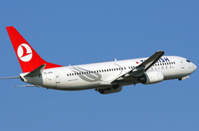Airline Business 25th anniversary messages and contributions:
Here's to the Golden Jubilee. Abdullah Nergiz, Turkish Airlines' co-ordinator executive vice presidency, commercial, looks back 25 years at the milestones in of the industry and for the Turkish carrier's own development
Looking back, 1985 was no exception - just another turbulent year for commercial aviation. The legendary Pan Am had to sell its Pacific routes to United Airlines, while TWA was purchased by Jordan Cahill and associates. The hijacking frenzy was continuing, with Amal guerrillas seizing TWA Flight 847 en route from Rome to Athens. In another part of the world, the worst single-aircraft air disaster was recorded when a JAL Boeing 747 crashed en route from Tokyo to Osaka, killing all but four of the 520 people on board.
On the other hand, those turbulent skies of 1985 also saw some positive events. The first issue of Airline Business magazine was published, and Ryanair was founded as a full-service airline. And in eastern Europe, a small flag carrier was trying to escape from the gloomy days of 1970s and thrive.
 |
|---|
The new A310 fleet became a milestone for Turkish Airlines, symbolising its great transformation from a sick state company to a customer-oriented, dynamic and influential player in eastern Europe and the Middle East.
In just four years, the number of A310s in its fleet reached 12 and Turkish Airlines was able to commence new long-haul routes such as Singapore, New York, Tokyo and Bangkok.
Under the institutional "perestroika", the so-called "pyjamas" colour scheme of the Turkish Airlines fleet was changed, along with the staff uniforms and all other company images, such as the official logo and design of the sales offices.
Cem Kozlu, then the chairman and chief executive of Turkish Airlines, influenced by legendary SAS chief executive Jan Carlzon, carried the leadership flag by transforming Turkish Airlines after 1988. Personnel were trained in "Putting People First" seminars in order to become customer-oriented, and the airline relaunched its business class service with a new concept. A frequent flyer programme was launched in 1989 and Turkish Airlines aimed to join the international league of global airlines.
In the five years after 1985, Turkish Airlines increased its passenger numbers by more than 65% while doubling available seat kilometres and achieving a positive passenger perception of the airline.
So, celebrating the 25th birthday of Airline Business coincides with a very important milestone in Turkish Airlines' history.
I hope we will all see Airline Business go on to celebrate its golden jubilee just as successfully.
Source: Airline Business



















